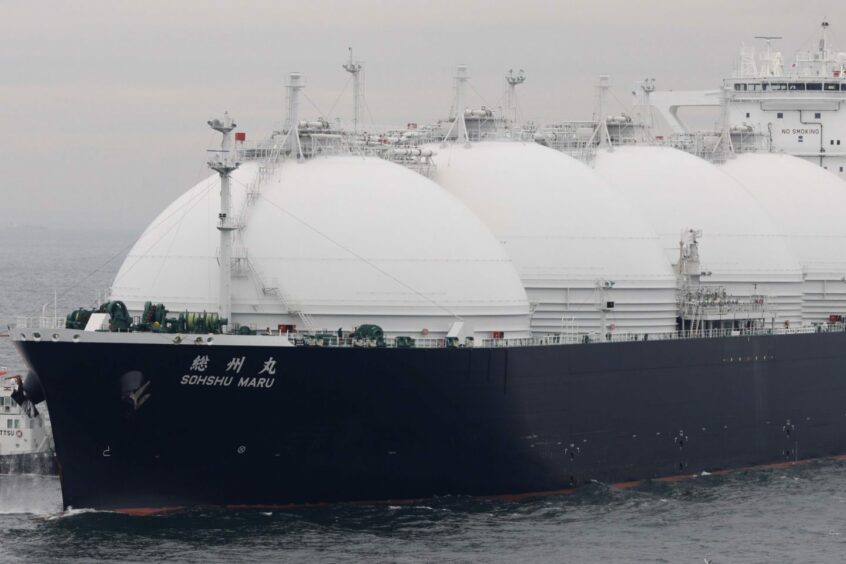
European and US natural gas storage levels are full going into winter, while those in Asia are filling up. This reduces the chance of a price crunch in the LNG market if cold weather materialises in the northern hemisphere this winter.
European storage is 99.5% full with around 116 bcm of gas, according to the EU Aggregated Gas Storage Inventory. US underground storage was 90% full, with over 107 bcm of natural gas at the end of October.
And in September combined Japan and South Korean storage was around 51% full with 8.7 bcm of gas, according to the latest data available from the Global Exporting Countries Forum (GECF). Both countries have been importing LNG cargoes since then.
“European storage is full to the brim and Asian storage and terminals are also quite full,” said Chris Goncalves, Managing Director of Consultancy BRG Energy and Climate, speaking on a webinar organised by Energy Connects last week.
“There are some LNG cargoes out on the water as floating storage as well. It would take, I think, some extreme events to really stress the system at this point,” he added.
Buffering
Most regions have taken measures to avoid price shocks in LNG markets such as those seen last year following Russia’s invasion of Ukraine. The EU mandated a 90% gas storage target, while Japan introduced a new Strategic Buffer LNG reserve for the winter, where additional volumes are imported and held in reserve.
Meanwhile, China, Taiwan, South Korea and India are all undertaking LNG storage construction programmes. Asia has just under 40 bcm of gas storage currently, according to data from Cedigaz. But if all storage projects planned or under construction are completed in the region, storage capacity will more than double to just under 100 bcm.
High storage levels do not entirely protect the system from price shocks, according to Javier Moret, global head of LNG at RWE Supply & Trading, speaking on the same webinar.
“If we have another supply disruption from the US, from Norway or from the North Sea we will see more volatility,” he said.
Moret noted a school of thought within the analyst community that the ongoing closure of coal plants, the intermittent nature of renewables and a lack of adequate new LNG supply meant that more volatility was quite possible in the near-term.
“I don’t think the system as a whole will be as robust as it used to be until we see significant additions of LNG, which will only happen in 2027,” he said.
Export pause
A slump in demand during the Covid-19 pandemic led to a pause in investment in LNG export projects. Although last year’s high prices boosted final investment decisions (FIDs), they did little to accelerate the pace of project completion, as doing so greatly inflates the price of project construction.
Only 14.9 million tonnes per year of exports will come on stream across 2023 and 2024, and 17mn tpy in 2025, according to a report on new capacity additions from the Institute for Energy Economics and Financial Analysis (IEEFA). After that, capacity additions will pick up, with 101 mtpa coming online across 2026 and 2027.
Although the lack of new supply means volatility could return in the near-term, the extreme prices spikes of 2022 are unlikely to be repeated, according to Goncalves.
“I think we’re going to see the amplitude of those swings smoothed out a bit. I’m not saying that volatility is gone by any means – but that it will be more manageable over the coming years,” he said.
Coal competition
Low capacity additions until 2027 will also mean that most energy demand growth is met with higher renewables capacity, with gas principally displacing existing coal burn, particularly in Asia, according to Goncalves.
“I think the opportunity for gas going forward is much more in picking up coal displacement than it is in picking up energy demand growth,” he said.
This would also serve to reduce volatility as coal could re-displace gas at times of higher gas prices.
Despite this increase, there are concerns amongst market participants about a looming long-term supply gap in the market.
Shell has warned that there is only enough LNG supply under construction to reach 500mn tpy by 2040. However, under Shell’s LNG outlook 2023, the company sees demand of 650-700mn tpy by that point.
Recommended for you
